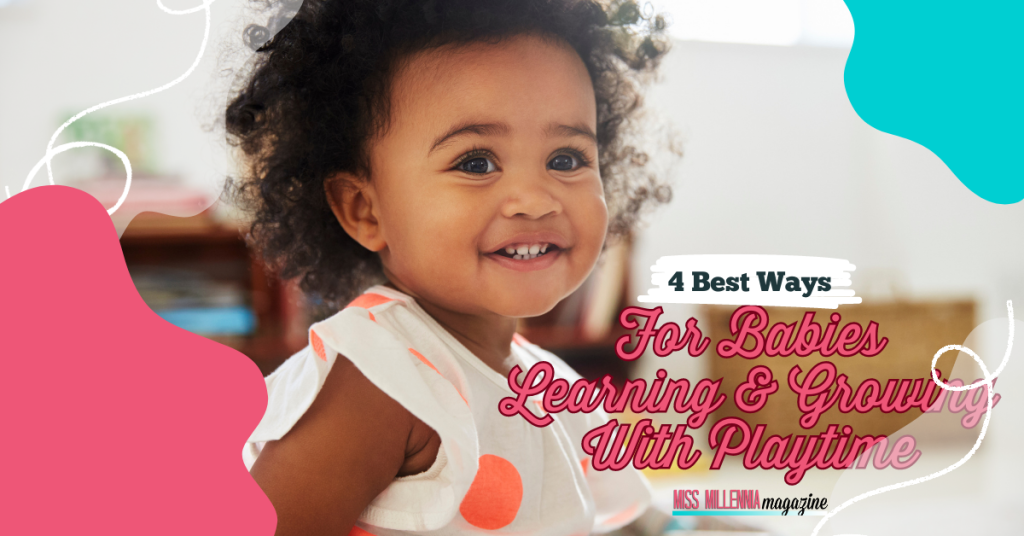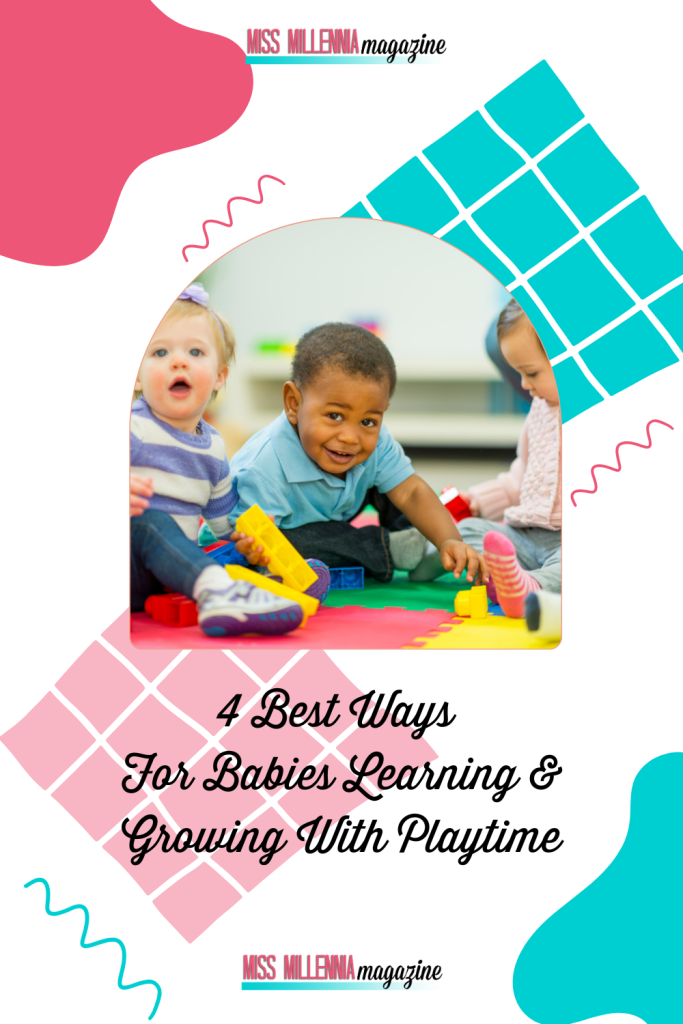4 Best Ways For Babies Learning & Growing With Playtime

From very early on, you will be recommended to let your child have plenty of tummy time. It helps to strengthen their necks and their core muscles too. Around this time, you will notice their legs start kicking, almost like a bit of a frog.
They may even get frustrated by not being able to get to the thing they can see. Playtime with parents, guardians, and other children is part of babies learning and growing. Perhaps one of the best things is that baby toys don’t need to be expensive; they will just as quickly play with placements as they will with an interactive book.
Over time they will start to show a preference, but in the meantime, here are some of the best ways to engage with your baby and start learning and playing.
Music & Books
Your baby will turn their head when they hear you talking; it is a sound that they have listened to and been comforted by the whole time they were in the womb. Or, in other circumstances, it is the voice they have come to know after birth. They find comfort and happiness in that sound.
So it makes sense that playtime should be filled with words. Singing nursery rhymes is one of the most common places to start, but you can just as quickly sing them your favorite songs too!
Babies are like sponges, so whatever you sing, they will start to absorb. You can turn any moment in the day into a singing opportunity – from changing nappies to putting on shoes.
Introducing books here can be great, too; baby books are usually chewable and fun, so you don’t need to read them just yet, but having books around is essential. If you have some of your favorite children’s tales, try to fit them into every day. It is a great way to build a sizable vocabulary from an early age – but perhaps more than that, a great way to share your childhood with your child.
You can also play nursery rhymes and children’s songs in the background!
Motor Skills
Peek-a-boo anyone? Peek-a-boo is a great way for your child to learn motor skills. Picking up and putting down a little cloth to cover their face or simply trying to grab the one you have all counts.
Soft rattles that make a noise or mats that have pressure-activated sounds can all help your child to start using those bigger muscles to move and create sounds. As well as the noise from the item – they will have you cheering them on too!
Babies have a superb grab reflex (which is why sometimes we find our hair being the object of a grab), so help them to master it by handing them different textured items to see what they like the most.
Tummy time is one of the ways babies build up the muscles to start crawling – and while not all babies will cry, some go right on ahead to walking; this is essential. You don’t need to have specially shaped tummy time pillows. All you need is a soft mat that is reasonably padded. Because babies bump their heads a lot in tummy time as they master neck strength.
Play Pens
As your child starts sitting up and being a little more mobile, they can be a danger to themselves! Heaving books off shelves, getting into cupboards, and so much more. When you have things to do in the day, or you want five minutes to have a cup of coffee and sit down, a pack-and-play can be a savior. While not everyone loves the idea of them, there are some Pack And Play features to look for if you want to get one.
Stacking Up, Knocking Them Down
Stacking cups and blocks to knock them down is a lot of fun! This is great for hand-eye coordination and spatial awareness too. Can this vast block fit on this tiny block? Maybe!
Almost everything during this time will be put in their mouth because that is how babies experience the world—biting, chewing, and sucking on blocks, cups, spoons, and more.
You might also find that they master how to throw around this time too! Anything that can be rolled, thrown, stacked, shaken, or pressed will be. This is usually from 6 months onwards when they are busy!
Try to get toys in a range of textures to keep playtime interesting, and your child might start showing a preference for certain types of toys now too.
Water toys that can help with the pouring motion, toys that react to being shaken or rolled, shape sorting toys and paints, and paint brushes are all incredible for assisting children to learn skills like grip, spatial awareness, recognition, texture, and cause and effect.
Active
Although we live in a high-tech world, and babies will be drawn to tablets and phones (because they see us use them so much), active play is a better idea for the basis of their learning. This means that children who can do not spend too much time in chairs and seats, not too much time on their backs, and so on.
Activities that encourage them to move their body as much as possible. With active play, an adult will need to supervise at all times because new skills present themselves quickly – and a sitting baby can pull themselves up and start sofa cruising the moment you leave the room!
Playtime for babies up to teens is some of the most excellent times; we all learn better when we are happy. Not only that, but playtime keeps you as engaged as possible with your little one too! After all, you are their favorite thing in the world!
Perhaps you are preparing for all the beautiful things that come with being a parent. It pays to make sure you know both sides of the coin as you embark on one of the biggest challenges in life: 4 Important Things First-Time Mothers Need To Know?





